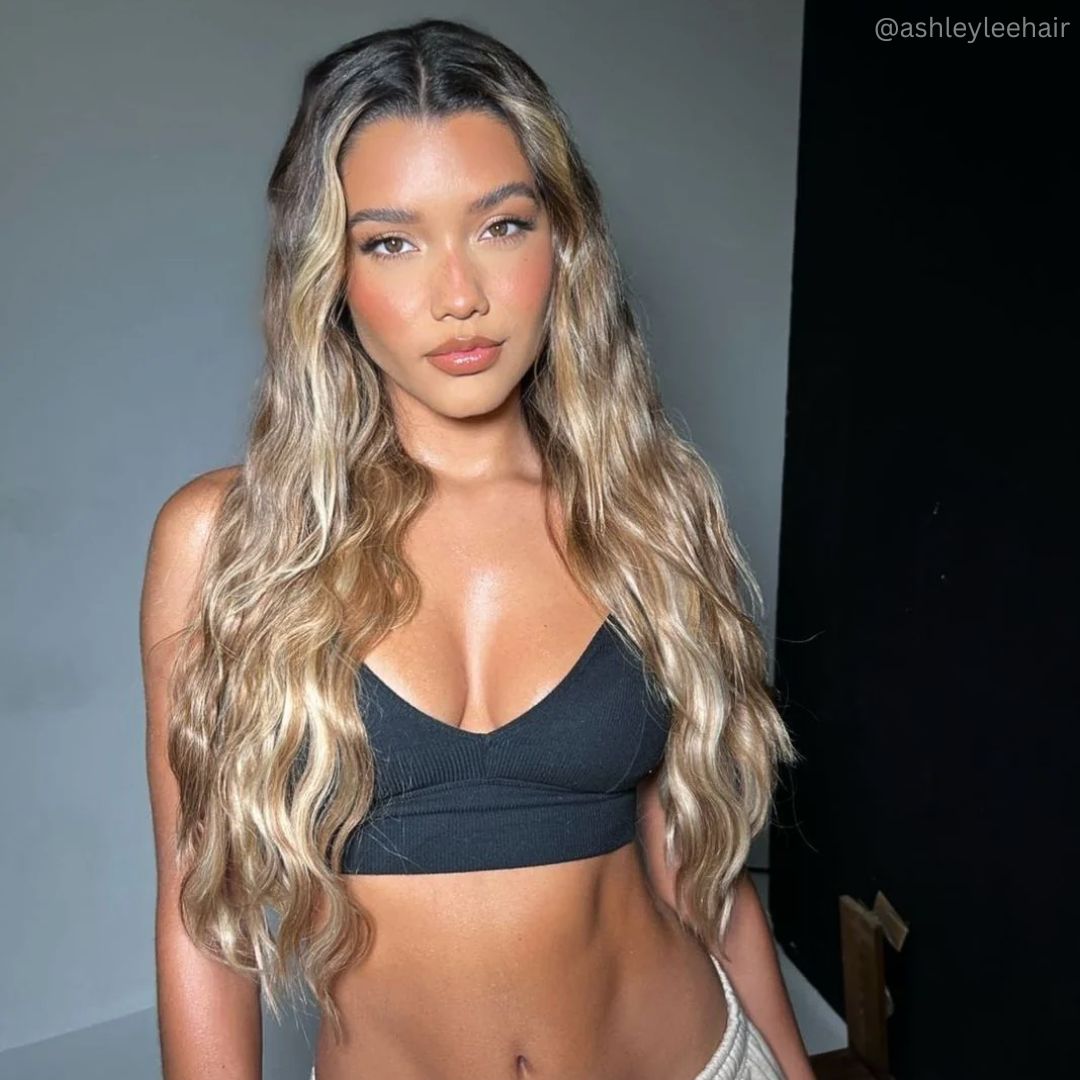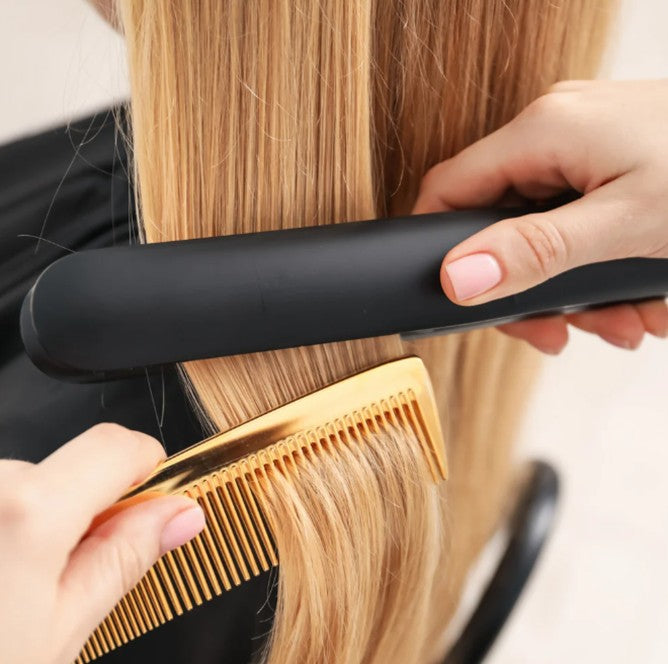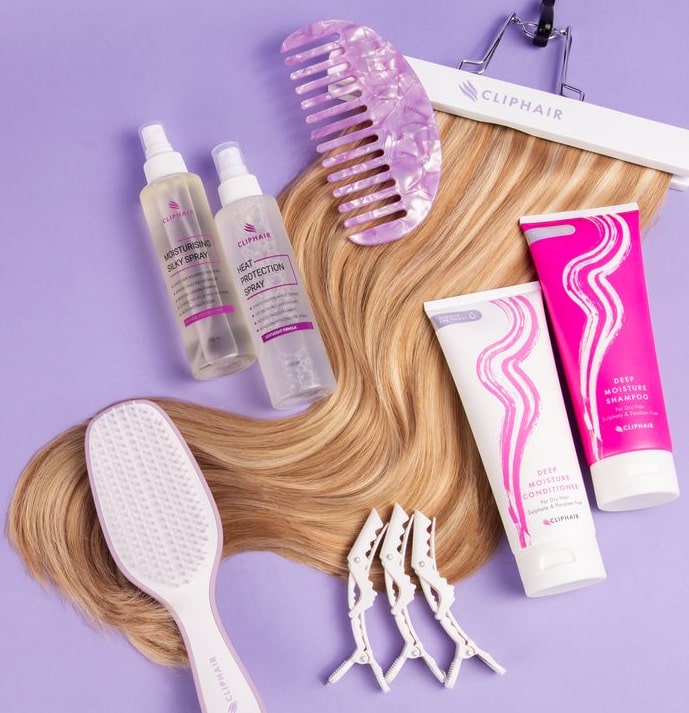How To Make Hair Less Greasy?
by BRENDA L. / 11. NOV 2023

Reading Time: 5 Minutes
Index
Although I have mentioned greasy hair quite a lot in the past, especially when talking about hair oils and tape in hair extensions, the most asked question remains the same: if I do have oily tresses, how to get rid of greasy hair? And obviously, what are the causes behind this phenomenon? Is there any way greasy hair can be prevented? Albeit annoying, oily tresses are relatively easy to deal with. Let’s see together how to combat greasy hair for a fuller, voluminous mane that looks shiny, healthy, and puffy without being weighed down by an excess of oil!
Why Does Hair Get Greasy?
Your scalp naturally produces a substance called sebum, whose function is mostly focused on maintaining your skin and hair soft, manageable, and hydrated. Depending on your hair type, skin type, and any genetic or health conditions, these “taps” of natural moisture can work too frequently or not enough – causing greasy hair, itchy scalp, flakiness, and other scalp health-related concerns.
Greasy hair can be a frustrating issue, affecting not only the aesthetics but also your confidence – but this is usually something that you can help with or solve entirely by making the right hair care choices and working around your personal health by picking specific foods, and maintaining a healthy lifestyle. There are many reasons why hair could get greasy too often - let’s find them out together.
The Major Causes of Greasy Hair
In a few words, here’s a list of some of the most common causes behind an excess of oil production in your hair.
Overactive Sebaceous Glands: The scalp is equipped with sebaceous glands that produce sebum, a natural oil that nourishes and protects the hair. However, overactive glands can lead to excess oil production, causing greasiness.
Genetics: Genetic factors play an essential role in determining how active your sebaceous glands are. Unfortunately, if greasy hair kind of runs in the family chances are that you might be predisposed to it – but that doesn’t mean that you have to live with oily hair.
Hormonal Changes: Whether it’s puberty, pregnancy, menstruation, menopause, andropause, or other hormonal fluctuations that we’re talking about, your sebum production can be impacted. This can result in an excess of sebum in your tresses.
Incorrect Hair Care Habits: You may be led to thinking that you are genetically predisposed to oily hair when really it’s your hair care routine that is doing more damage than good. Overwashing or aggressive shampoo formulas can strip the scalp of its natural oils, making your glands compensate for it with an excess in sebum production.
How To Get Rid Of Oily Hair
If you are struggling with oily hair, there are a few things that you can try to reduce the production of sebum in your scalp: let’s see them together.
Choose the Right Shampoo: washing your hair with the right product can be an easy solution to solve a greasy hair problem that stems from using the wrong formula – may it be too aggressive, or one that isn’t optmized for frequent washing (if that’s your case). Choose a mild shampoo, even better if sulfate-free (especially if you’re wearing human hair extensions!). Formulas for sensitive skin are good or look for shampoos that are specially designed for frequent use. Aim at keeping your washing days two or three times a week!
Balanced Diet: I can never stress this enough – hair’s health and beauty starts from within. A diet rich in vitamins and minerals helps regulate sebum production: yes to fruits, vegetables, and omega-3 fatty acids in your meals! If you’d like to know more about how food can have a positive impact on your hair’s look, have a read at our dedicated blog: #Healthyhair Foods To Eat For Healthy Hair.
Proper Conditioning: are you a fan of conditioner and hair masks? Yes, me too. But just because they feel amazing on our hair and smell delicious, it doesn’t mean that they should be applied to your scalp as well! The perfect way to apply conditioner and hair masks on your tresses is to focus on your ends and mid-lengths, avoiding the roots. If you’re wearing products such as tape in hair extensions, this could also lead to premature slip-off of your permanent hair extensions!
Dry Shampoo: if you’re on the go and need a quick fix in between washes, there are many dry-shampoo options that can help your hair look and feel a bit more alive, more often than not providing your mane with a clean scent too. Not sure about which one works best for you? Find out on our blog: Top 10 Best Dry Shampoos And Why We Love Them.
Cool Water Rinse: some people get great benefits in terms of oiliness when they finish their shower with a cool water rinse. Cold water is also really good for your hair cuticles, closing them and promoting shine and smoothness in your tresses. This is a pro-tip for when you wash your clip in hair extensions as well!
Avoid Touching Hair: just like our scalp, our hands are constantly producing oil to maintain softness in the skin. But think of everything else you do with your hands: from eating to smoking, holding the handrail on your train, shaking hands with others, typing on keyboards… Something that comes in frequent contact with so many things on a day-to-day basis shouldn’t run that often in your hair.
Boar Bristle Brushing: a boar-bristle brush helps distribute natural oils from the scalp along the length of your hair, preventing an accumulation of sebum at the roots.
Scalp Massage: regulat gentle massages to your scalp can improve your blood circulation, which can help regulate oil production in your tresses. Consider incorporating a scalp-massaging device (or even just a gentle scalp scrub!) into your hair care routine for phenomenal results!
Conclusion:
Greasy hair is normal, and although the excess of natural oils in your tresses can be quite annoying, by following the above-mentioned simple steps you can enjoy healthier, lighter hair that will make you feel more confident.
Suchen Sie makelloses, salonwürdiges Haar, ohne die Bank zu sprengen? Bei Cliphair haben wir für Sie luxuriöse Clip-In-Haarverlängerungen für schnelle Transformationen und dauerhafte Haarverlängerungen für langanhaltenden Glamour. Extensions benötigen besondere Pflege und Wartung, um ihre Qualität zu erhalten. Deshalb haben wir alle erstklassige feuchtigkeitsspendende Haarpflegeprodukte erforderlich, um Ihren Stil auf den Punkt zu bringen.
Brauchen Sie den perfekten Farbton? Stöbern Sie durch unser komplettes Sortiment an Echthaar-Extensions in über 70 satten, seidigen Farbtönen oder schauen Sie sich unsere KOSTENLOSER Express-Farbabgleichservice um jedes Mal eine nahtlose Mischung zu gewährleisten.






